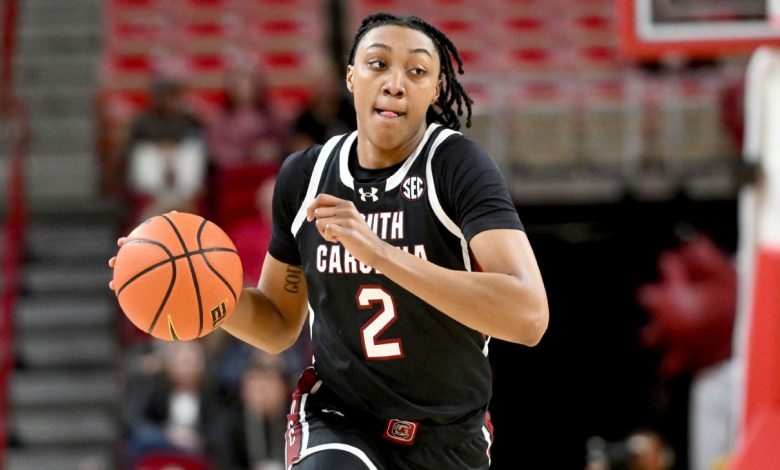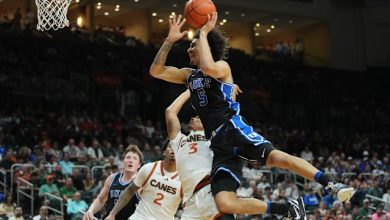Ashlyn Watkins’ absence significantly weakens South Carolina women’s basketball’s interior defense and rebounding, challenging their dominance and requiring adjustments from the team moving forward.

The South Carolina women’s basketball team, under the leadership of head coach Dawn Staley, has established itself as a powerhouse in collegiate women’s basketball, consistently competing at the highest level and contending for national championships. A significant component of their success has been their interior presence—dominated by talented post players who provide rebounding, shot-blocking, and scoring in the paint. Among these key players, Ashlyn Watkins has stood out as a vital figure. Her recent absence due to injury or other reasons has sent ripples through the team’s dynamics, forcing adjustments and raising questions about their future performance.
This comprehensive analysis explores the multifaceted impact of Watkins’ absence, focusing on team defense, rebounding, offensive options, team chemistry, strategic adaptations, and potential long-term consequences for South Carolina women’s basketball.
1. Ashlyn Watkins’ Role and Contributions
Before examining the void created by her absence, it’s essential to understand Watkins’ role within the team. Standing at approximately 6’4”, Watkins is renowned for her elite rebounding, shot-blocking, and interior scoring. Her presence in the paint served as a deterrent to opponents’ driving lanes and post-up attempts, making her a cornerstone of South Carolina’s defensive identity.
Offensively, Watkins provided reliable scoring inside, complementing perimeter shooters and creating second-chance opportunities through offensive rebounds. Her ability to stretch the floor with mid-range shooting also added a dimension to her game, making her a versatile threat.
Defensively, Watkins was a key rim protector, often anchoring the team’s interior defense, disrupting opponents’ shots, and altering attempts in the paint. Her athleticism and timing made her an intimidating presence, contributing to South Carolina’s reputation as one of the best defensive teams in the nation.
2. Immediate Impact of Watkins’ Absence
The immediate consequence of Watkins’ absence is a significant weakening of the team’s interior defense and rebounding. This impact manifests across several areas:
a. Interior Defense and Shot-Blocking
Without Watkins patrolling the paint, South Carolina’s shot-blocking ability diminishes. Opposing teams may exploit this gap by attacking the rim more aggressively, knowing the shot-blocker is less present to deter or alter shots. This can lead to increased scoring in the paint and higher opponent field-goal percentages near the basket.
Additionally, the team’s rim protection becomes less formidable, potentially leading to more second-chance points for opponents on offensive rebounds. Watkins’ timing and instincts in blocking shots are difficult to replace immediately, which can temporarily give opponents a psychological edge.
b. Rebounding
Rebounding is crucial in controlling possession and limiting opponents’ second-chance opportunities. Watkins, known for her relentless effort and positioning, was a primary contributor on the defensive glass. Her absence likely results in a decline in defensive rebounds, giving opponents more opportunities to score on second and third shots.
Offensively, Watkins’ rebounding ability also contributed to South Carolina’s possession extension, allowing the team to maintain offensive pressure and create more scoring opportunities.
c. Team Defense and Communication
Watkins’ presence on the floor was also vital for team communication and defensive cohesion. As a senior or experienced player, she often anchored rotations and provided leadership in the paint. Her absence may cause a temporary breakdown in defensive communication, leading to lapses and miscommunications that opponents can exploit.
3. Repercussions on Offensive Dynamics
While Watkins’ offensive contributions were valuable, her absence primarily affects defensive stability. However, there are secondary impacts on the team’s offensive rhythm:
- Reduced Inside Scoring Options: The team loses a reliable scoring threat in the paint, forcing other post players or perimeter shooters to step up.
- Increased Defensive Focus on Perimeter: Opponents might shift their defensive focus outward, daring South Carolina to beat them with outside shooting—potentially exposing weaknesses if perimeter shooting is inconsistent.
- Altered Rebounding and Second-Chance Opportunities: The team may struggle to capitalize on offensive rebounds, reducing second-chance points and overall scoring efficiency.
4. Strategic Adjustments and Lineup Changes
In response to Watkins’ absence, Coach Dawn Staley and her staff must implement tactical adjustments to mitigate the impact:
a. Increased Use of Versatile Post Players
South Carolina has depth at forward and guard positions, which can be leveraged to fill Watkins’ void. Coaches might deploy taller or more athletic forwards or even shift perimeter players into more interior roles to compensate.
For example, players like Aliyah Boston—who has the size, skill, and defensive instincts—may need to absorb more interior responsibilities, playing extended minutes or taking on more aggressive rebounding and shot-blocking roles.
b. Enhanced Defensive Schemes
Without Watkins, the team may adopt more perimeter-oriented defenses, such as full-court presses or trapping schemes, to disrupt opponents before they can attack the paint.
Switching to zone defenses might also help cover gaps in interior defense, although this can sometimes be less effective against teams with strong inside scorers.
c. Emphasizing Team Defense and Rotations
South Carolina might focus on tighter rotations, emphasizing help defense and communication to compensate for the loss of shot-blocking and rebounding. This requires increased discipline and coordination among players.
d. Focusing on Transition Defense
Speeding up the pace on offense and emphasizing transition defense can minimize opponents’ scoring opportunities in the paint. Fast-break opportunities can also offset some of the interior scoring loss by generating easy baskets in transition.
5. Impact on Team Chemistry and Morale
The absence of a key player like Watkins can influence team chemistry. Her leadership on and off the court was likely instrumental in maintaining team cohesion and focus.
Players may feel additional pressure to perform, which could either galvanize the team or cause temporary inconsistency. The coaching staff’s ability to maintain morale and provide strategic clarity will be vital during this period.
6. Potential for Development and Growth
While Watkins’ absence is undeniably challenging, it also presents opportunities:
- Emergence of Young Players: Freshmen or less-utilized players may step into larger roles, gaining valuable experience and developing their skills.
- Increased Depth and Versatility: The team might discover new lineups or rotations that improve overall versatility.
- Defensive Adaptability: Learning to defend effectively without Watkins can make the team more adaptable in postseason matchups.
In the long term, this adversity can foster resilience and team growth, provided the coaching staff manages the transition well.
7. Long-Term Implications
The impact of Watkins’ absence extends beyond immediate games:
- Recruiting and Future Depth: If Watkins’ injury or absence is prolonged, the coaching staff might prioritize recruiting additional interior defenders and rebounders to build depth.
- Postseason Seeding and National Title Contention: A weakened interior could hinder South Carolina’s ability to dominate in March, especially against teams with strong post players.
- Team Identity and Style of Play: The team may shift toward a more perimeter-oriented style temporarily, influencing their strategic approach in future seasons.
8. Broader Context: South Carolina’s Resilience and Depth
Despite Watkins’ absence, South Carolina’s program has demonstrated resilience historically. Their recruiting prowess, coaching excellence, and player development capacity provide optimism that they can adapt and remain competitive.
The team’s success will depend on how quickly players step up, the effectiveness of strategic adjustments, and the leadership provided by veterans and coaching staff.
Ashlyn Watkins’ absence presents a significant challenge for South Carolina women’s basketball, primarily through the weakening of their interior defense and rebounding. Her role as a shot-blocker, rim protector, and rebounder was central to their defensive identity and overall team success.
However, adversity often breeds opportunity. The team’s depth, coaching ingenuity, and collective resilience will determine how effectively they can bridge the gap left by Watkins. Emphasizing perimeter defense, leveraging versatile players, and fostering team cohesion will be essential.
While the immediate impact may be felt in defensive statistics and rebounding metrics, the team’s ability to adapt strategically and develop emerging talent can mitigate some of the setbacks. Ultimately, Watkins’ injury underscores the importance of depth and versatility in championship-caliber teams, and how resilience in the face of adversity can define a season.
South Carolina’s women’s basketball program remains formidable, and their capacity to navigate this setback will be a testament to their strength, leadership, and strategic acumen. Fans and analysts alike will be watching closely as the team adjusts, grows, and strives to maintain their status among the nation’s elite.









